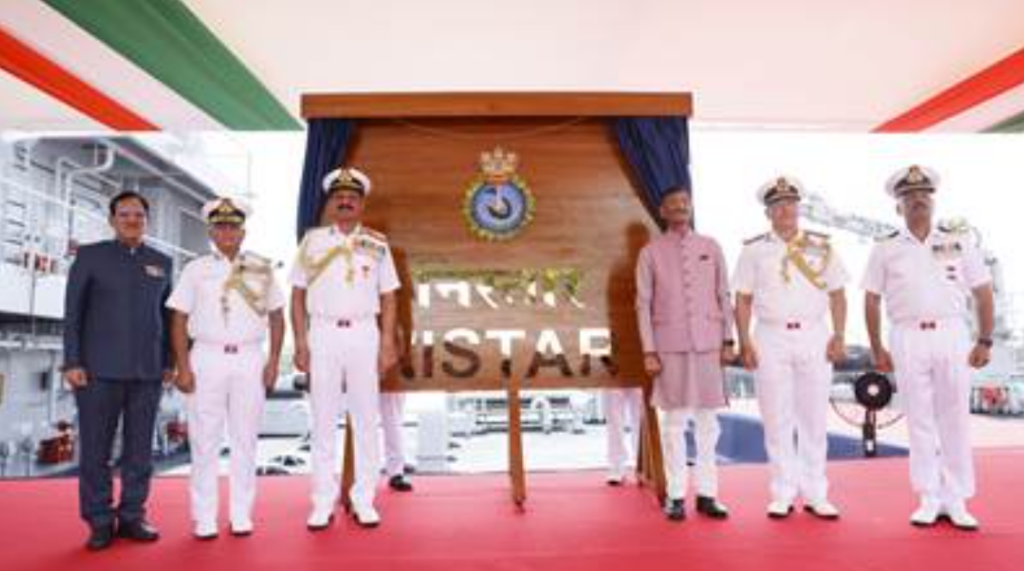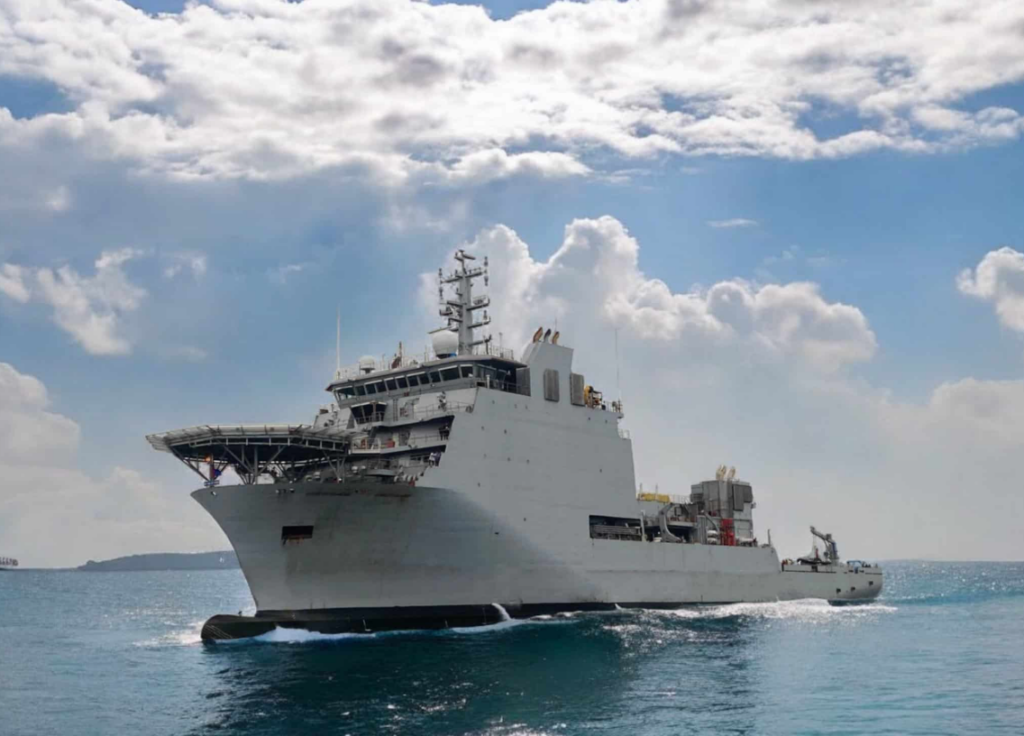INS Nistar Commissioned as India’s First Indigenous Diving Support Vessel
Indian Navy commissioned INS Nistar on July 18, at Visakhapatnam. It is India’s first indigenously built Diving Support Vessel (DSV). The ceremony was attended by Defence Minister of State Sanjay Seth and Navy Chief Admiral Dinesh K Tripathi. Developed by Hindustan Shipyard Limited (HSL) under a 2018 contract, Nistar is the lead ship of a two-vessel class designed for deep-sea saturation diving, salvage, and submarine rescue. The keel of Nistar was laid in December 2019, and was delivered to the Indian Navy on July 8, 2025. Chief of Naval Staff Admiral Tripathi called Nistar “not just a technological asset, but a crucial operational enabler”. He also said that it will allow India to emerge as a preferred submarine rescue partner in the region.

The 118-meter-long vessel displaces over 10,000 tons and has a crew of approximately 250 personnel (25 officers and 225 sailors). Its cruise speed is 14 knots with an endurance of over 60 days at sea. It is equipped with modern saturation diving systems and support equipment, including remotely operated vehicles (ROVs) for deep searches and compression chambers. Nistar also has a night-vision-capable helicopter flight deck, and the ship incorporates over 80% indigenous content in its construction.
Nistar primarily functions as a mothership for Deep Submergence Rescue Vehicles (DSRVs). It can support saturation diving and salvage missions to depths of around 300 metres (while its ROVs extend its reach to about 1,000 metres). The ship enables the Indian Navy to conduct submarine rescue operations on both its eastern and western coasts, utilizing both DSRVs and its own diving capabilities. Navy officials noted that Nistar’s induction will strengthen India’s role as a first responder in the Indian Ocean, with Tripathi saying it makes India a “preferred submarine rescue partner” in the region.
INS Nistar is larger and more capable than INS Nireekshak (the Navy’s older submarine rescue ship). INS Nistar reinforces the nation’s status as a regional hub for submarine rescue operations and significantly boosts India’s deep-sea rescue and submarine support capacity.

